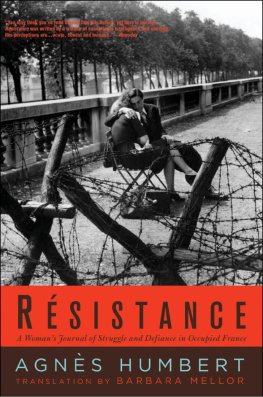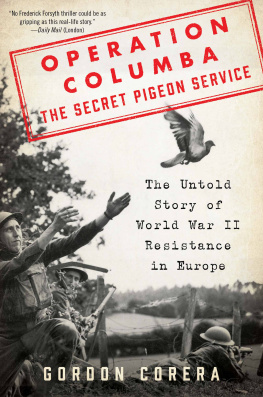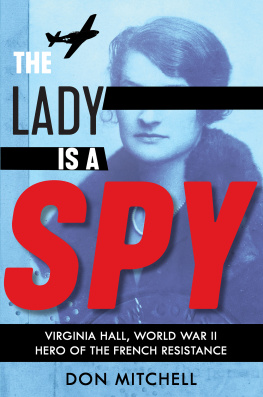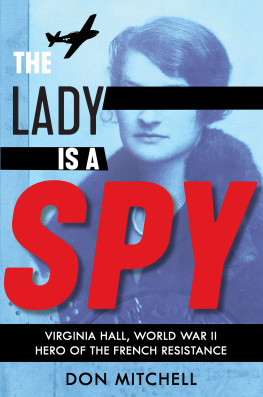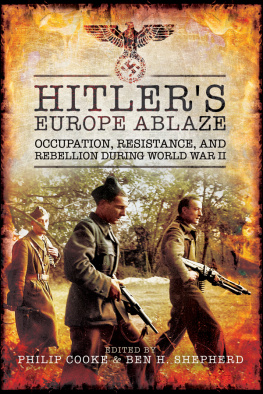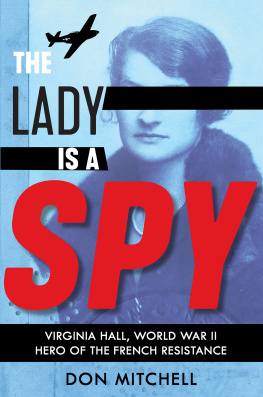Spying in World War I: The True Story of Margriet Ballegeer

Spying in World War I: The True Story of Margriet Ballegeer
Janet Dean
Contents
ACKNOWLEDGEMENTS AND AUTHORS NOTE
INTRODUCTION
PROLOGUE
CHAPTER 1: GROWING UP
CHAPTER 2: THE OUTBREAK OF WAR
CHAPTER 3: FATHER MOONS
CHAPTER 4: MARGRIETS FAMILY SHELTERS THE PRIEST IN KONTICH
CHAPTER 5: ARREST
CHAPTER 6: HENRI VAN BERGEN
CHAPTER 7: AT WORK
CHAPTER 8: SUCCESS IS SHORT-LIVED
CHAPTER 9: ARRESTED AGAIN
CHAPTER 10: IN PRISON
CHAPTER 11: THE TRIAL
CHAPTER 12: THE END
CHAPTER 13: AFTER THE EXECUTION
CHAPTER 14: IN ENGLAND
APPENDICES
Appendix 1: Germaines letter
Appendix 2: The last letter of Father Moons
Appendix 3: The last letter of Henri Van Bergen
NOTES
Acknowledgements and Authors Note
Thanks:
To my cousin Michael Joyner who provided me with so much material.
To my godmother, Suzanne Van Reeth, who looks after the family archive.
To Mike Chappell, who encouraged me and advised as to how to seek publication.
To Hugo Smits, a mine of information and a great help with Flemish history.
To Aleyda Maycock, for translating those difficult documents.
To John Young, for lending me his smelly old books.
To Carine Lybaert, for her ability in tracking down rare information and giving me a place to stay.
To Nick Matthews, for lending me books and taking photographs.
To Naomi, Siri and Walter Lybaert, for their interest and support.
To Maurice Janssens, for his practical help.
To Frank Hellemans and Paul Wyckmans of the museum in Kontich, for their enthusiastic involvement.
To Alan Dean, for his map.
To all my friends who have expressed interest in my project and have followed its progress over the years.
To Graham Shardlow, for being patient throughout.
Thanks also to Dr Debbie Daniels, for the therapy which ran alongside and helped the writing of this book.
Belgium is a bilingual country and so many places have a Flemish as well as a French name for example, Leuven/ Louvain. I have used English spellings for Ostend, Brussels and Antwerp but in other cases have kept to Flemish.
Flemish spelling was updated in the 1930s: in my grandmothers day her hometown was spelt with a C but I have used the modern version, Kontich.
Margriets family and friends spoke and wrote French and Flemish with equal ease and used both languages in everyday life: she used French and Flemish versions of her name and when she moved to England adopted the English, Margaret. I have kept to her Flemish name as this was how she was known at home, although her fianc called her Marguerite.
Because they usually spoke French she always referred to her fianc as Henri or Harry, rather than the Flemish Hendrik, so I have done the same. In other cases I have used the Flemish rather than French versions for example, Frederik and Jozef.
Instead of using Mr and Mrs, I have used the French M. and Mme as this was how Margriet referred to her friends in Brussels.
Introduction
Margriet Ballegeer was my grandmother. I have known her story all my life: as a child I spent many afternoons in her kitchen in Eastbourne with the cat on my lap, listening as she told me over and over the memories of her own childhood and her experiences spying for the British in German-occupied Belgium during the Great War.
Through her stories I learned what it was like to be the eldest of four sisters growing up in the small town of Kontich at the turn of the century, in a family dominated by a powerful father. She used to weep as she described the pain of being refused permission to marry the man she loved and was full of praise for her sister Germaine, who eloped to England with her fianc after he was banned from the house.
Even as an old woman she remembered the shock of the German invasion of Belgium in 1914 and her decision to become a spy. It was thrilling to hear how she helped to keep the British Intelligence services supplied with information smuggled out of the country under the noses of the occupying soldiers. Her codename was Rayon de Soleil, or Sunbeam.
Her description of Henri Van Bergen, the charismatic leader of the network with whom she fell in love, was so romantic, but the character I loved best was Father Felix Moons, the cheerful priest who was so daring and courageous throughout the war. The tales of betrayal and execution and Margriets narrow escape from a similar fate gave me nightmares.
Nan and I would go through her box of photographs and mementoes, which prompted more detailed memories of her experiences and helped her explain how she came to settle in England on her release from prison after the Armistice.
I was always proud of being related to a war hero, but it was only when she died in 1980 at the age of 89 that I decided that one day I would write about her life. It took me until 2005, with two children grown up and retirement on the horizon, to realize that if I did not do so then, probably no one else would, and she would be forgotten.
I contacted BBC Radio 4s Making History team who carried out some research and included an item in their programme about my grandmothers involvement in the spy network and the dates of her imprisonment. It was clear to them that there was very little published material about this subject so I started my own research, finding references in French and Flemish publications to some of the individuals involved but hardly anything about Margriet herself. Through the radio programme I was able to find my cousin Michael Joyner, with whom I had lost contact and who helped enormously by sending me a tape recording of our grandmother narrating her wartime experiences in her own words. This had been made in the 1970s by my uncle and aunt, and until then I did not know such a thing existed.
It was months before I could face listening to the tapes, but when I recovered from the shock of hearing her voice I was amazed at how clearly she could describe people; how she could recall exact dates and conversations and explain how she felt even after half a century. Her account confirmed that my memories had survived from childhood and I set about verifying the facts through research.
My cousin also sent me a number of photographs that I had never seen before: these I have included here along with images from my own collection. I have made many visits to Belgium where my familys help has been invaluable: not only have they translated many documents but also have tracked down photographs and information that I would never have found by myself.
I am not a historian and could not begin to write a history book: instead this is an account of Margriet Ballegeers life, based on what she told me herself. I have tried to fill in the gaps from contemporary accounts and modern historical research but much of the story is in her own words. This book has taken me years to write; it was a very emotional process which I am glad is over at last. I did not want the contribution of a courageous woman to be forgotten, particularly as we approach the centenary of the Great War.
Prologue
Margriet Ballegeer woke early on 15 March 1918 realizing that it could be the last day of her life. The stale air and cold grey walls of the isolation cell were particularly depressing as she tried to summon what courage she had left to face yet another agonizing day of waiting. Her heart lurched at every distant sound: those approaching footsteps might bring news of her fate; raised voices and doors slamming downstairs might mean that a decision had been made. This could not go on for much longer; surely by now the German military commanders must have decided whether her death sentence would stand or whether she had been spared the firing squad.
Next page





